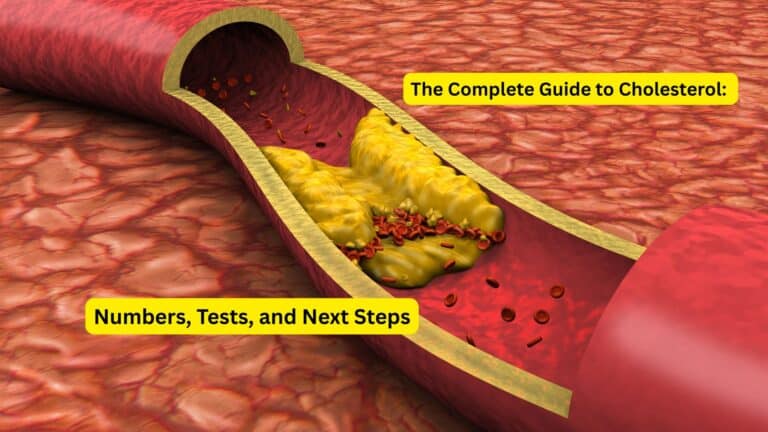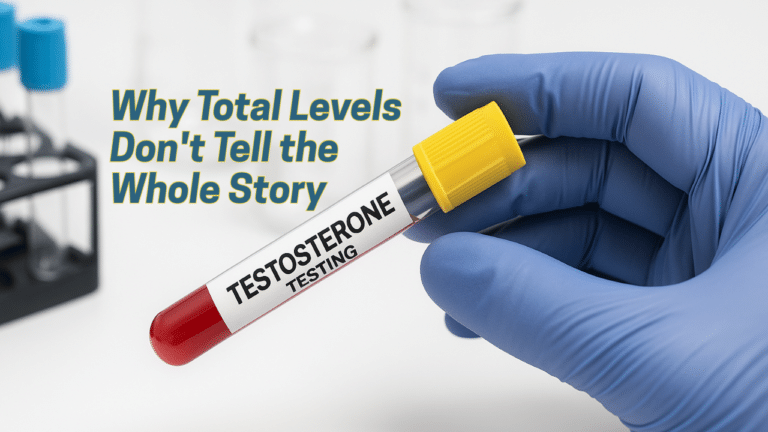Your energy levels might have more to do with your gut than you realize. The digestive system serves as your body’s primary energy processing center, where trillions of microorganisms work around the clock to extract nutrients and produce metabolites that fuel your daily activities. Understanding this intricate gut-energy connection offers a powerful pathway to combat fatigue and enhance your overall vitality through targeted digestive health strategies.
How the Gut Produces Energy
Think of your gut as a sophisticated energy factory that operates on multiple levels to keep you energized throughout the day. Beyond simply breaking down food, your digestive system houses a complex ecosystem of microorganisms that actively participate in energy production. This process involves both immediate nutrient absorption and the creation of energy-rich compounds that your body can utilize for sustained vitality.
Fermentation and SCFAs
When dietary carbohydrates and proteins escape digestion in your small intestine, they become fuel for the beneficial bacteria residing in your colon. These microorganisms ferment the undigested material, producing short-chain fatty acids (SCFAs) that your body readily absorbs and converts into usable energy. Individual variation in metabolizable energy ranges roughly from 84% to 96% on high-fiber diets, with differences in microbial biomass and fermentation efficiency playing crucial roles in determining how much energy you actually extract from your food.
This fermentation process is particularly important because it allows your body to capture energy from dietary components that would otherwise pass through your system unused. The SCFAs produced—primarily acetate, propionate, and butyrate—not only serve as direct energy sources but also help regulate metabolism and support intestinal health. Research shows that up to 60% of energy from dietary carbohydrates not absorbed in the small intestine is fermented in the colon, highlighting the significant contribution of gut microbes to your overall energy balance.
Nutrient Absorption
The efficiency of your digestive system directly determines how much energy becomes available to your cells. Your intestinal lining must effectively absorb vitamins, minerals, and macronutrients to support optimal energy production at the cellular level. When digestive function is compromised—whether due to inflammation, enzyme deficiencies, or microbial imbalances—your body may struggle to access the full energy potential of the foods you consume.
Optimal nutrient absorption requires a healthy intestinal barrier, adequate digestive enzymes, and proper pH levels throughout your digestive tract. Even minor disruptions in this process can lead to nutrient deficiencies that manifest as persistent fatigue or reduced physical performance. The gut also produces various enzymes and cofactors that are essential for energy metabolism, making digestive health inseparable from your overall vitality.
Individual Differences in Energy Balance
Not everyone extracts the same amount of energy from identical meals, and this variation stems largely from differences in gut microbiome composition and digestive function. Your unique microbial ecosystem, shaped by factors including genetics, diet history, and environmental exposures, determines how efficiently your body processes food into usable energy. These individual differences help explain why some people seem to have boundless energy while others struggle with persistent fatigue despite similar lifestyles.
Microbiome Diversity
The diversity and composition of your gut microbiome significantly influence how much energy your body can harvest from food. A more diverse microbial community typically correlates with better metabolic flexibility and more efficient energy extraction. Different bacterial species specialize in breaking down specific nutrients, so a varied microbiome ensures that your body can effectively process a wide range of dietary components.
Approximately 25%-50% of fecal energy loss is derived from microbial biomass, demonstrating how gut bacteria compete with your body for available energy. However, this competition isn’t necessarily detrimental—many of these microorganisms produce beneficial metabolites that ultimately support your health and energy levels. The key lies in maintaining a balanced microbial ecosystem where beneficial bacteria predominate over potentially harmful species.
Certain bacterial strains are particularly effective at producing energy-rich SCFAs, while others excel at synthesizing B vitamins and other compounds essential for cellular energy production. The relative abundance of these beneficial microorganisms in your gut directly impacts your capacity to maintain steady energy levels throughout the day.
Transit Time
The speed at which food moves through your digestive system affects both energy extraction and microbial metabolism. Longer colonic transit times associate with greater energy extraction from the diet but also influence microbial metabolism variability among individuals. When food remains in your colon longer, bacteria have more time to ferment undigested materials and produce SCFAs.
However, excessively slow transit time can lead to bacterial overgrowth and the production of less favorable metabolites. Conversely, rapid transit may not allow sufficient time for optimal fermentation and nutrient absorption. Finding the right balance in transit time—through diet, hydration, and lifestyle factors—is crucial for maximizing energy extraction while maintaining gut health.
Individual variations in transit time help explain why identical dietary interventions can produce different energy outcomes in different people. Understanding your personal digestive rhythm can guide dietary timing and composition decisions to optimize energy availability throughout the day.
Diet and Gut-Energy Connection
Your dietary choices profoundly shape both your gut microbiome and your energy production capacity. Different foods selectively promote the growth of specific bacterial species, which in turn influence how efficiently your body processes nutrients into usable energy. The relationship between diet, gut health, and energy is so interconnected that changing what you eat can dramatically alter your vitality levels within weeks.
High-Fiber Diets
Dietary fiber serves as the primary fuel source for beneficial gut bacteria, making it one of the most important nutrients for sustaining energy levels. When you consume fiber-rich foods, you’re essentially feeding the microorganisms that produce energy-enhancing SCFAs. This creates a positive feedback loop where better bacterial nutrition leads to improved energy production for your body.
Plant-based diets increase gut microbial diversity, positively impacting metabolic and energy homeostasis compared to diets high in animal proteins. High-fiber diets also promote the growth of bacterial species that are particularly efficient at producing butyrate, an SCFA that serves as a preferred energy source for colon cells and helps maintain intestinal barrier function.
The energy benefits of fiber extend beyond direct bacterial fermentation. Fiber-rich foods typically require more energy to digest, a process known as the thermic effect of food, which can actually boost your metabolic rate. Additionally, the steady release of energy from fiber fermentation helps prevent the energy crashes often associated with refined carbohydrate consumption.
Animal-Protein Heavy Diets
While protein is essential for energy production and cellular repair, diets heavily weighted toward animal proteins can shift gut microbial composition in ways that may impact energy metabolism. Animal proteins that escape digestion in the small intestine undergo bacterial fermentation in the colon, but this process produces different metabolites compared to fiber fermentation.
Some of these protein-derived metabolites, such as certain amines and sulfur compounds, may have less favorable effects on gut health and energy production compared to the SCFAs produced from fiber fermentation. However, this doesn’t mean animal proteins are inherently problematic—rather, the key lies in achieving the right balance between protein and fiber intake to optimize both muscle maintenance and gut health.
Moderate amounts of high-quality animal proteins can support energy levels by providing essential amino acids for neurotransmitter production and cellular energy metabolism. The challenge is avoiding excessive reliance on animal proteins at the expense of fiber-rich plant foods that feed beneficial gut bacteria.
Plant-Rich vs. Processed Diets
The contrast between whole, plant-rich foods and heavily processed alternatives extends far beyond basic nutrition—it fundamentally alters how your gut microbiome functions and produces energy. Processed foods often lack the fiber and micronutrients that beneficial bacteria need to thrive, while simultaneously providing simple sugars that can promote the growth of less favorable microbial species.
Plant-rich diets provide diverse fibers, polyphenols, and other bioactive compounds that selectively nourish beneficial bacteria. These compounds not only serve as bacterial fuel but also have direct effects on gut health, including reducing inflammation and supporting intestinal barrier function. The result is a more efficient energy extraction system and better overall vitality.
Processed foods, particularly those high in added sugars and refined grains, can cause rapid fluctuations in blood sugar that lead to energy crashes. They also tend to be low in the nutrients required for optimal cellular energy production, creating a scenario where you consume calories without obtaining sustained energy benefits.
Practical Ways to Support Gut Health for Energy
Transforming your understanding of the gut-energy connection into actionable strategies requires a comprehensive approach that addresses diet, lifestyle, and individual health factors. The most effective interventions target multiple aspects of digestive health simultaneously, creating synergistic effects that enhance both gut function and energy production. Small, consistent changes often yield more sustainable results than dramatic dietary overhauls.
Eat more whole foods and fiber-rich meals: Focus on incorporating a variety of fruits, vegetables, whole grains, legumes, and nuts into your daily diet. Aim for at least 25-35 grams of fiber per day from diverse sources to feed different beneficial bacterial species. Gradually increase fiber intake to avoid digestive discomfort, and pay attention to how different fiber sources affect your energy levels throughout the day.
Stay hydrated and keep regular meal timing: Proper hydration supports digestive enzyme function and helps maintain optimal transit time through your digestive system. Aim for consistent meal timing to help regulate your circadian rhythm and optimize digestive efficiency. Eating at irregular intervals can disrupt both gut bacteria and energy metabolism.
Include probiotics and prebiotics: Incorporate fermented foods like yogurt, kefir, sauerkraut, and kimchi to introduce beneficial bacteria, while consuming prebiotic-rich foods like garlic, onions, Jerusalem artichokes, and bananas to nourish existing gut microbes. Consider high-quality probiotic supplements if dietary sources are insufficient, but remember that whole foods provide additional nutrients that supplements cannot match.
Manage digestive issues to support nutrient absorption: Address underlying digestive problems such as food intolerances, inflammatory bowel conditions, or enzyme deficiencies that may impair nutrient absorption. Work with healthcare providers to identify and treat conditions like small intestinal bacterial overgrowth (SIBO) or leaky gut syndrome that can interfere with energy production.
Consider gut health testing for personalized insights: Comprehensive stool analysis and microbiome testing can reveal specific imbalances in your gut bacteria, digestive enzyme levels, and markers of intestinal health. This information enables targeted interventions based on your unique digestive profile rather than generic recommendations.
FAQ
How does the gut microbiome affect my energy levels?
Your gut microbiome affects energy levels by fermenting undigested food components into short-chain fatty acids (SCFAs) that your body absorbs and uses for fuel. The diversity and balance of your gut bacteria determine how efficiently this process occurs, with beneficial microorganisms producing metabolites that enhance energy production while supporting overall metabolic health. An imbalanced microbiome can reduce energy extraction from food and contribute to fatigue.
Can improving digestion really boost vitality?
Yes, improving digestive function can significantly boost vitality by enhancing nutrient absorption and optimizing the production of energy-rich metabolites by gut bacteria. When your digestive system operates efficiently, your body can access more energy from the foods you consume while reducing the metabolic burden of inflammation and poor nutrient utilization. Better digestion also supports the production of neurotransmitters that influence mental energy and mood.
What role does fiber play in gut health and energy?
Fiber serves as the primary fuel source for beneficial gut bacteria, which ferment it into SCFAs that your body uses for energy. Dietary fiber feeds beneficial gut bacteria, promoting fermentation that produces energy-rich metabolites contributing to your overall energy balance. Additionally, fiber helps regulate blood sugar levels, preventing energy crashes and supporting sustained vitality throughout the day.
How do different diets impact the gut’s energy function?
Plant-rich diets foster the growth of beneficial microbes that efficiently produce energy-supporting SCFAs, while diets high in processed foods and low in fiber can promote less favorable bacterial species. Animal protein-heavy diets produce different fermentation byproducts that may have varying effects on gut health and energy metabolism. The key is achieving a balanced diet that provides adequate fiber for beneficial bacteria while meeting your protein and nutrient needs.
Can gut health testing help with fatigue?
Gut health testing can identify specific microbial imbalances, digestive enzyme deficiencies, and markers of intestinal inflammation that may contribute to fatigue. Testing gut microbiome composition and digestive efficiency can inform personalized strategies to optimize nutrient absorption and energy levels. This information enables targeted interventions such as specific probiotic strains, digestive enzymes, or dietary modifications tailored to your unique gut profile.
Conclusion
The gut-energy connection represents one of the most promising frontiers in understanding and optimizing human vitality. Your digestive system functions as much more than a food processing center—it’s a complex energy production facility where beneficial microorganisms work alongside your body’s natural processes to extract maximum energy from your diet. The individual variations in microbial composition, transit time, and digestive efficiency explain why personalized approaches to gut health often yield the most dramatic improvements in energy levels.
By focusing on fiber-rich whole foods, maintaining consistent meal timing, and supporting your microbiome with probiotics and prebiotics, you can harness the power of the gut-energy connection to combat fatigue naturally. However, the most effective strategies often emerge from understanding your unique digestive profile through comprehensive testing and working with healthcare providers to address any underlying imbalances.
Ready to unlock your body’s energy potential through better gut health? Walk-In Lab offers comprehensive digestive health and microbiome testing that can provide the personalized insights you need to optimize your vitality. Take the first step toward understanding your gut-energy connection and discover how targeted interventions can transform your daily energy levels.






